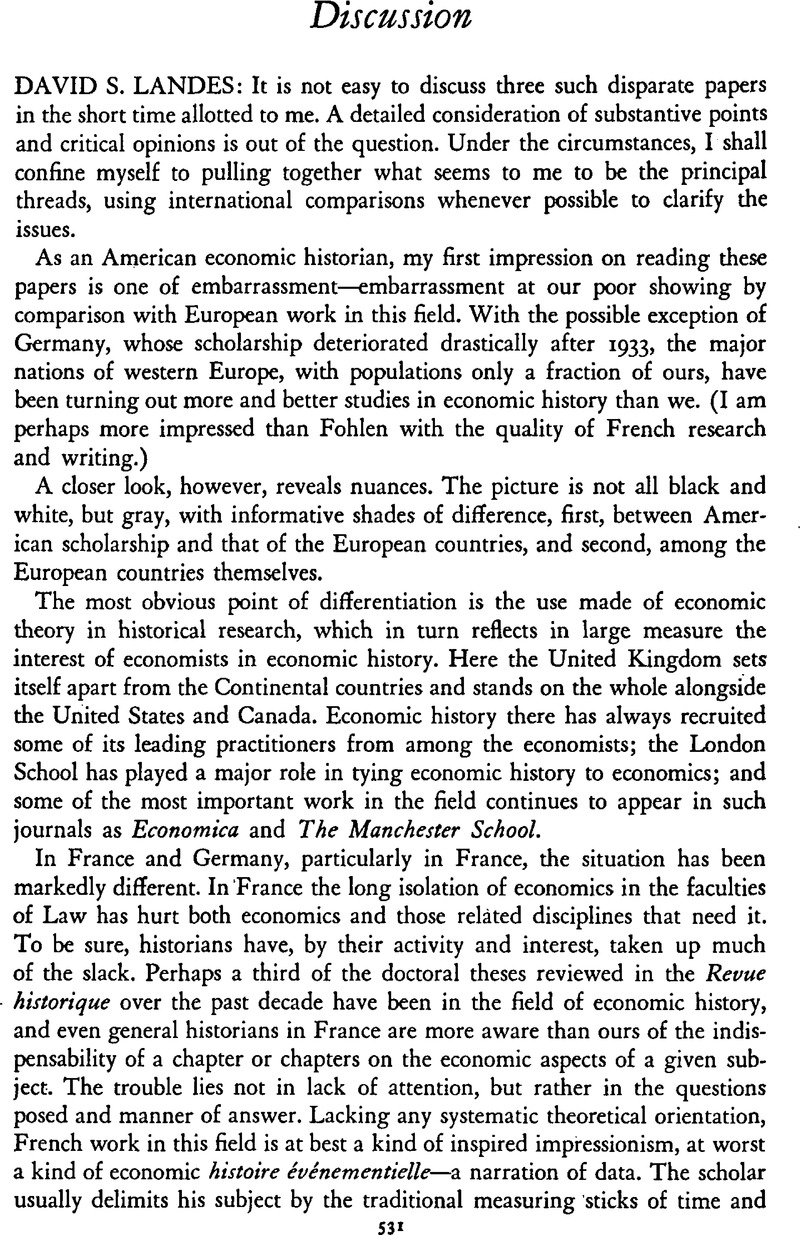No CrossRef data available.

1 Under the direction of Francois Perroux, the Institut de Science Economique Applique'e (35, boulevard des Capucines, Paris IIe) has published a journal, Economic appliquee (Vol. I, 1948)Google Scholar, several series of mimeographed cahiers, and a number of special monographs. The material of most interest to the historian has appeared in the series on national income, Série D, especially No. 7 (La croissance du revenu national jrancais depuis 1780 [1952]) and No. 8 (MatéWiaux pour une analyse de la croissance économique [1955]). Cf. Perroux, F., “Prise de vues sur la croissance de l'economie francaise, 1780-1950,” in Kuznets, Simon, ed., Income and Wealth, Series V (London: Bowes and Bowes, 1955), pp. 41–78Google Scholar.
2 Cf. Fourastié, Jean, et al., Prix de vente et prix de revient: recherches sur l'évolution des prix en période de progrès technique (ye série) (Paris: Editions Montchrestien, n.d.). This and the other publications in the series have been prepared in collaboration with the Centre d'Etudes et de Mesures de la ProductivityGoogle Scholar.
3 The sad thing is that French economists are not sure whether it is economics. Their main concern has been the description of contemporary institutions-banking structure, industrial organization, etc. They have never had much stomach for traditional economic history: witness the vain efforts of Sayous to publish an article on late medieval commercial practice in the Revue d'économie politique. And they are not particularly hospitable to work of a newer type. The Revue économique was founded in 1950 to bridge the gap between economics and the other social sciences, but it has done little along that line and has become essentially a vehicle for those economists who are not at home with the old school.
4 Die Arbeiterfrage zu Bcginn des modernen Kapitalismus in Brandenburg-Prcussen (Berlin: Verein für die Geschichte der Mark Brandenburg, 1927)Google Scholar.
6 P. H. Mertes, editor of a bibliography of histories of Westphalian firms (Die Wirtschajt West-falerts und des Ruhrgebiets in Firmen-Festschriften [Dortmund: Westfälisches Wirtschaftsarchiv, 1952]).Google Scholar is currently working on a history of joint-stock enterprise in this area.
6 See his important article, “Staatliche Wirtschaftslenkung und freies Unternehmertum im westdeutschen und im nord- und südniederlandischen Raum bei der Entstehung der neuzeitlichen Industrie im 18. Jahrhundert,” Vierteljahrschrijt für Sozial- und Wirtschaftsgeschichte, XLV (1958), 168–241Google Scholar.
7 “Die Einwirkungen der Industrialisierung auf die gesellschaftliche Schichtung der Bevölker-ung im rheinisch-westfälischen Industriegebiet,” Rheinische Vierteljahrsblätter, XX (1955), 301-16.Google Scholar
8 Pouthas, Charles H., La population française pendant la première moitè du XlXe siècle (Paris: Presses Universitaires, 1956).Google Scholar To be sure, Pouthas rightfully conceives his task as one of establishing and organizing the data, leaving the evaluation of their meaning for later. But he is disconcertingly successful in isolating the demographic current from the streams around it, and one cannot but wonder whether the book is not seriously the weaker for it.
9 See also the work of the Institut National d'Etudes Démographiques, especially that of Louis Chevalier, whose special interest is the population of Paris-its sources, growth, social structure and attitudes, occupational composition, ecological distribution, etc. The Institut (23, avenue Franklin-Roosevelt, Paris VIIIe) has published the periodical Population (Vol. I, 1946)Google Scholar, some twenty-five printed monographs (as of 1956), and a number of special volumes.
10 The example that always comes to my mind is that of Georges Lefebvre, who published his Paysans du Nord pendant la Revolution française in 1924, at the age of fifty.